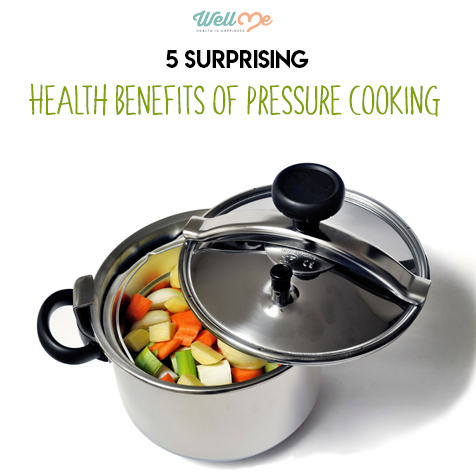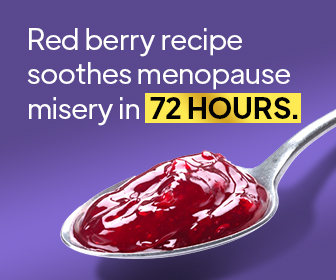Pressure cooking is increasingly suitable for home cooking. In the past, pressure cooking was a real risk with the low quality of pressure cookers in the home — they were prone to exploding and injuring the owner. In the modern-day, these cookers are far safer and have a negligible chance of blowing up in your face.
Today, pressure cooking is a great way to create delicious, tender dishes with a unique combination of ingredients. Dishes with a pressure cooker can turn cheap, nutritious ingredients into a delicious casserole, slow-cooked meat dish, or delicious desserts. This is one of the most underrated ways of improving the quality of your diet.
Not only is pressure cooking a great way of getting the most out of simple, healthy ingredients, but it is also a great method of cooking with a much healthier cooking process than frying. In this article, we’re going to share some of the surprising health benefits of pressure cooking, as well as the benefits to taste and cooking in general.
What is Pressure Cooking?
Pressure cookers were invented in the 15th century by Denis Papin to experiment with using steam to cook food. They were unsafe for use in the home for centuries after this, before manufacturing standards and technology improved them enough for the general public to adopt pressure cookers.
A pressure cooker is simply a pot that is sealed with a valve to control steam pressure: the ceramic pot heats up when placed over heat, turning the liquid in the pot into steam which raises the heat and pressure of the pot. This results in increasing the temperature that food can be cooked at – up to 250°F. When compared to the recommended 212°F when boiling food in a conventional saucepan, this is a significant difference and the use of steam reduces the chance of drying out meat or burning food. The increased pressure also helps to maintain moisture into the food. Overall, this means that food is cooked faster and that tougher ingredients become more tender.
Versatility
One of the best things about pressure cooking is that a single pressure cooker can be used to reliably cook almost any food. The list of foods that can be cooked in a pressure cooker is almost endless, with many popular foods being perfectly-suited to pressure cooking. Here are some examples:
These are some of the main foods and dishes involved in developing a well-balanced and health-promoting diet. While there are many alternative ways to cook these foods, pressure cookers require almost no preparation or extra equipment. If you’re looking for a versatile piece of equipment that can cook almost anything, the pressure cooker is an amazing addition to your kitchen.
Preserving the Nutrient Profile of Food
With the high heat at which food is cooked, you might be worried that the nutrients would be ruined – as in other forms of cooking like frying or baking. High heat tends to denature the proteins and vitamins of food, especially when it is performed in a cast iron skillet or in an oil that has reached smoke point. These are consistently shown to reduce the nutritional value of a food and increase the risk of cancer posed by such foods.
You’ll be glad to know, then, that pressure cooking maintains a great nutritional profile[1]. While heat is incredibly high, the pressure of the environment ensures that food cooks through at a great speed while also maintaining moisture and preserving high-quality nutrients like proteins and vitamins.
Pressure cooking has been shown to preserve as many as 95% of the original nutrients of food, which is far greater than other forms of cooking. While this 5% decrease in nutrients is still sub-optimal, it is a great improvement on other methods and it is important to remember that no method will be 100% efficient at preserving nutrients, with boiling shown to preserve only 40%.
In some foods, the use of a pressure cooker specifically improves certain nutritional aspects of the food. For example, when grains and legumes are cooked in a pressure cooker, the digestibility of macronutrients (especially proteins and starch) is increased and essential minerals have a higher bioavailability. These foods also contain a modest amount of phytic acid, which inhibits the absorption of other nutrients in the body, but it is rapidly deactivated by the high pressures of pressure cooking and makes these foods far healthier. This is not only a great way of improving the intake of nutrients, but it also makes grains and legumes less likely to irritate the digestive system[2]. This means if you’re suffering from a more sensitive stomach, this method may make eating these foods more manageable.
Cooking Times
The nutritional profile of foods cooked in a pressure cooker is partially due to the amazing speed at which a pressure cooker works. The longer that a food is left to cook, the greater the degradation of nutrients, especially proteins. As the pressure cooker is fast to cook foods and provides a high-pressure environment to reduce the escape of nutrients through steam, it is possible to cook food quickly without losing any key nutrients.
This is also inherently practical. If you’re like us, you’re much keener to eat delicious food than cook it. The food that is produced by a pressure cooker will be fresher and more colorful than its boiled counterpart and will have a much fresher texture.
Avoiding Low-Quality Cooking Styles
As well as making some foods more digestible, pressure cooking avoids the formation of potentially-harmful chemicals associated with other methods of cooking such as grilling, baking, or frying. Cooking meat at excessive temperatures on a grill can exaggerate the formation of carcinogens to form that could potentially cause mutations in the DNA, leading to cancer. The pressure cooker may still beautifully caramelize and brown meat, but it avoids the associated risk from harmful chemicals[3].
As mentioned, the use of oil during traditional methods like frying and baking is another huge benefit to pressure cooking. As mentioned above, the use of various forms of oil and other fats rapidly encounter the “smoke point” problems — when these oils become too hot, they begin to burn. This results in an increased concentration of carcinogenic compounds in the food itself.
While pressure cooking cooks at high heat, the pressure of the air in the pan reduces the likelihood of an oil reaching the smoke point. This makes pressure cooking a great way to avoid unnecessary cancer risks — this is even more profound when compared to frying pans that have been coated with
Maximizing the Benefits of Pressure Cooking
As mentioned above, there is no 100% efficient method of cooking, so it is important to perform your cooking in the best way possible to make the most of your pressure cooking. These tips are the best ways to make the very most of your pressure cooker, ensuring that you maximize your health benefits and value for money.
Reusing Juices
Most of the lost nutrients in pressure cooking are transferred into the liquid used to cook your food. Thus, to get the maximum benefit possible, try reusing the cooking liquid into a gravy or sauce that could compliment the dish you are preparing.
For example, try cooking a chicken in the pressure cooker with appropriate seasoning. Once you have cooked it, use the juices to develop a stock or soup. These are both great ways to make the most of your purchases and reduce waste.
Focus on Your Liquids
With the increased pressure in the pot, the way you handle your liquids is a serious factor in the safety of your cooking and the quality of the food that results.
First, be sure to use a relatively small quantity for your first cook. Sufficient liquids will be necessary to develop the right internal environment and the liquid will ensure an even cook. However, the use of too much liquid rapidly increases the overall pressure and too much can be a real risk. While modern brands of pressure cookers are far safer than those your grandparents used, you should still avoid filling it halfway, or you may be cleaning your liquids off the walls.
The liquid also plays a much larger culinary role for taste and nutrition. As mentioned above, the nutrients lost from food will likely end up in the juices. Additionally, liquid is not necessary for maintaining the moisture of foods, but it does play a large role in the taste of food. Due to the pressure of the pan, meat and other foods will absorb more water and thus the taste of those liquids.
Spend some more time and effort on the creation of a high-quality roux or stock, as the taste of these liquids will be absorbed by the other foods. This is a great way to make healthy but flavorless foods (like turkey) taste much better and improve your adherence to a healthy diet. This is key to long-term dietary success, so be sure to spend some real time thinking up how your liquids play into the overall design of your dishes.
Summary: What Should You Do Now?
Using a pressure cooker more often is a simple change to your diet and lifestyle that can have profound effects on the bioavailability of nutrients in your food. Changing from boiling to pressure cooking for vegetables alone can have a huge benefit in the fight against malnutrition and nutrient deficiency. If you can double the nutritional value of certain foods by switching from boiling or frying to pressure cooking, you’ll see an amazing long-term difference in your health and wellbeing.
Not only is pressure cooking a great way to improve your health and wellbeing, but it can produce a much easier, more pleasant result. The tenderness of foods cooked in a pressure cooker is reason enough to make the change from other forms of cooking. This is not to mention the reduction of carcinogens and the fantastic ways you can make use of a pressure cooker to save the often-forgotten parts of your foods.
In summary, pressure cooking:
- Increases temperature food can be cooked at
- Increases tenderness of food in a short space of time
- Creates deeper and more complex flavors compared to regular steamed or boiled foods
- Provides more nutrient-dense foods
- Improves the digestibility of grains and legumes
- Reduces harmful chemicals, unlike grilling or baking methods
Action Steps: Tips for a Great Beef Stew
For inspiration with using a pressure cooker, here is a simple beef stew recipe to get you started.
Ingredients
- 1 tbsp. olive oil
- 5lbs rump roast
- 2 chopped garlic cloves
- 1 diced onion
- 4 chopped carrots
- 4 chopped celery ribs
- 4 chopped potatoes
- 2tsp dried parsley
- 2 cups water
- 1 beef stock cube
Instructions
- Cut the meat into 1-inch chunks. Heat the oil in the pressure cooker until hot, then add the meat. Leave for 1 min. Stir and allow the meat to brown on all sides.
- Add the garlic, onions, celery, carrots, potatoes, parsley, water and beef stock.
- Lock the pressure cooker lid on top and bring to a high pressure over a high heat.
- Cook for 15 mins.
- Enjoy – as easy as that!

References
- [1] Habiba, R. A. “Changes in anti-nutrients, protein solubility, digestibility, and HCl-extractability of ash and phosphorus in vegetable peas as affected by cooking methods.” Food Chemistry 77.2 (2002): 187-192. <http://www.sciencedirect.com/science/article/pii/S0308814601003351>
- [2] DHANKHER, NEERJA, and B. M. Chauhan. “Effect of temperature and fermentation time on phytic acid and polyphenol content of rabadi—a fermented pearl millet food.” Journal of Food Science 52.3 (1987): 828-829. <http://onlinelibrary.wiley.com/doi/10.1111/j.1365-2621.1987.tb06739.x/full>
- [3] Hunt, Russell A. “Relation of smoke point to molecular structure.” Industrial & Engineering Chemistry 45.3 (1953): 602-606 <http://pubs.acs.org/doi/pdf/10.1021/ie50519a039>








